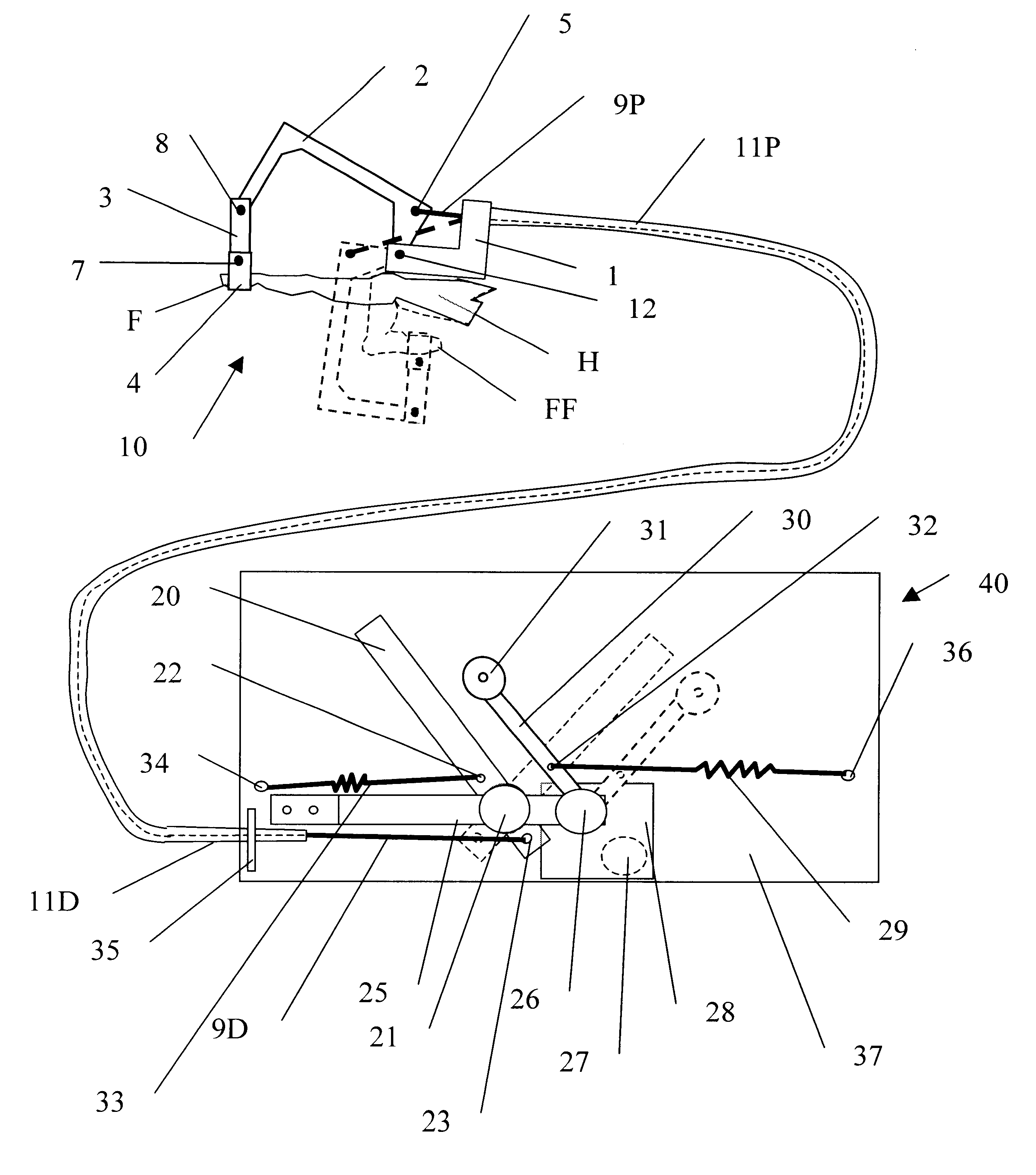Force display master interface device for teleoperation
a master interface and teleoperation technology, applied in repeater circuits, applications, instruments, etc., can solve the problems of inability to display force sensations that match those of real world interactions, inability to apply and remove bladder pressure at very high frequencies, and lack of simplicity in prior ar
- Summary
- Abstract
- Description
- Claims
- Application Information
AI Technical Summary
Benefits of technology
Problems solved by technology
Method used
Image
Examples
Embodiment Construction
The upper portion of FIG. 1 shows a side view of the finger mechanism 10 in a first position (solid lines) and a second position (dashed lines). The first position indicates a fully extended finger, and is referred to as a 0 degree position, while the second position shown is that in which the finger is fully retracted toward the palm and is referred to as a 180 degree position. Finger retraction is finger motion in the counter-clockwise direction, while finger extension is finger motion in a clockwise direction in FIG. 1. In the lower half of FIG. 1, the remote assembly 40 for remote measurement of finger angular position and selective display of contact and variable force is shown. Referring to the finger mechanism 10 shown in the upper portion of FIG. 1, a base 1 is pivotally connected to hand platform 14 by screw 13. The hand platform 14 is attached to the back of the operator's hand H during use by hook and loop fasteners 15, as best seen in FIG. 5. Link 2 is pivotally connecte...
PUM
 Login to View More
Login to View More Abstract
Description
Claims
Application Information
 Login to View More
Login to View More - R&D
- Intellectual Property
- Life Sciences
- Materials
- Tech Scout
- Unparalleled Data Quality
- Higher Quality Content
- 60% Fewer Hallucinations
Browse by: Latest US Patents, China's latest patents, Technical Efficacy Thesaurus, Application Domain, Technology Topic, Popular Technical Reports.
© 2025 PatSnap. All rights reserved.Legal|Privacy policy|Modern Slavery Act Transparency Statement|Sitemap|About US| Contact US: help@patsnap.com



